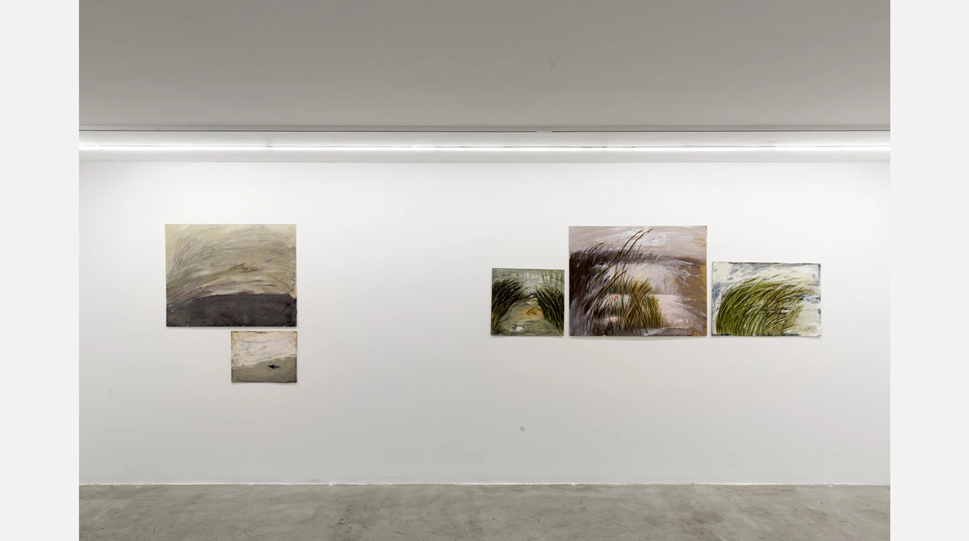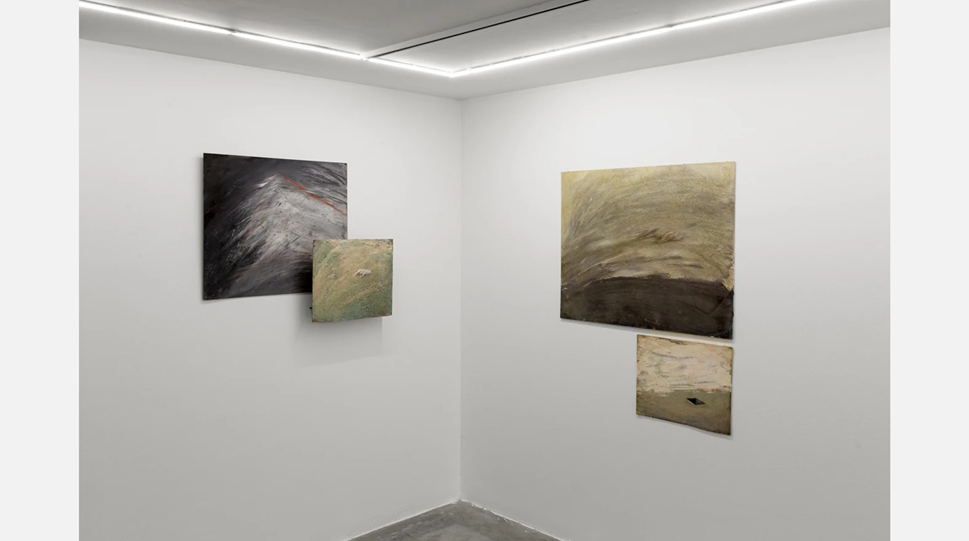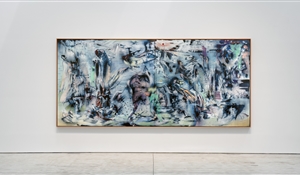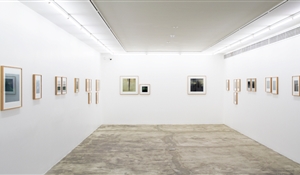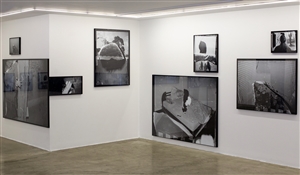A Review of Samira Shakeri's Solo Show at Dastan's Basement
06 Jun 2022Original text in Farsi by Abel Hartouni
Translated to English by Soheila Habibi
"Shame", the first collaboration of Samira Shakeri and Dastan's Basement, was held on October 29, 2021. In this show, Shakeri has presented her sketches and paintings and has tried to showcase the atmosphere of her studio and her working path as well. She was born in 1984 in Tehran and graduated from the Faculty of Art and Architecture, Azad University in 2007. Her works have been presented in different shows and she won the honorary award of the 18th Asian Art Biennale, Dhaka, Bangladesh in 2018.
"Shame" includes 2 different yet intertwined approaches to construct the image; sketches by ink and mixed media on paper and paintings on fiber.
She has used the huge public photographic archive of the post-revolutionary Iran for constructing this series. Almost every image with a different medium and function, from stamps, photos, and posters to textbook images and even murals, are in this archive. Referring to this archive, she is looking for the visual memory of the Iranian society after 1979. Shakeri's approach to these visual materials explores the exact representation of these images in a more sensory and personal encounter and ultimately to complete abstraction, interference, and capture; to the extent that no trace of the archive itself remains. We also see the working path of the artist and her trial and error in this research. For achieving a personal and unique atmosphere, she has used different materials and methods to make her images; from scraping, mild ink brushstrokes on tracing paper which show the fast and direct characteristic of sketching, to numerous and varied thick layers of color that are mostly present in her paintings.

Samira Shakeri | Untitled | 2020 | mixed media on fiber | 42 × 50 cm
For having more concentration on texture in painting, she creates her images on fiber. Her paintings include spaces with several colored layers in which there are some figures. Depending on their size and gesture, these figures are generally ecstatic, relaxed, and sometimes dead, as if making no effort to cope with drowning in the surrounding space. It seems that something is hidden behind the layers of paint in all the paintings. This hidden issue is traceable by iconic signs like trees behind which is nothing but darkness or a square ditch, and also indexical signs (physical index of painting color), like a figure drowned in a mass of red layers or depicted as an abstract landscape. Despite the life behind her personal brushstrokes, it seems like something is dead or dying.
Her sketches are straighter and unmediated on another level. According to the artist, the medium of the sketch is generally purer than the painting in which a longer and amendable process is experienced. It was for creating this series of sketches that she used the archive mentioned earlier. Here the artist moves freely in a process of trial and error and forms her mental and emotional perception of these images with various materials and methods. The image of the Nowruz stamp of two birds, one of which is peeking at the audience with a fearful and shameful eye evokes the artist increasingly and she has depicted it several times; in both an exact way and also a kind of emotional perception.

Samira Shakeri | Untitled | 2020 | mixed media on paper | 29 × 41.5 cm
From the tables to the end walls of the gallery, we see numerous sketches with almost the same subject; a description of the accumulation of male figures in a dark place. It can be said that the works of this collection refer implicitly to a more ideological layer of our visual memory with personal perception. The figures are merged and exaggerated, and it is not clear what they are doing and what's the purpose. There may not be a clear trace of the archive and its representation between these sketches, but despite their familiarity, their immediate executing nature, and their display of the accumulation of merged figures and the dark space around them, they make the invisible visible. Among this great deal of figures, we see the image of the two pigeons again, and next to it, the shameful eye of the same pigeon, which this time is placed in the orbit of a figure which is depicted from the side view. Maybe here is the only part of the show where the subject is eye to eye with the audience and what it seeks in the other's look is nothing but shame; the feeling that the artist has been involved with throughout the creation of his works. Shame was the strongest emotion evoked in the artist while she was exploring her personal archive, such a shame accompanied by anger that comes from failed ideals. Maybe we want to go back here and take another look at the standstill of the figures and their almost lifeless, bloody bodies, re-establish a dialogue between the whole work, and fill in the blanks ourselves. Let's also think that Shakeri's works refer to a situation in which prejudice, toughness, and rudeness are increasing day by day, therefore shame is a feeling that can be worth noting. Or at least we can give ourselves a chance to look at ourselves and the phenomena around us with glasses of shame.
Slider image:
- Source: dastan.gallery.com | Photo by: Matin Jame'ee




